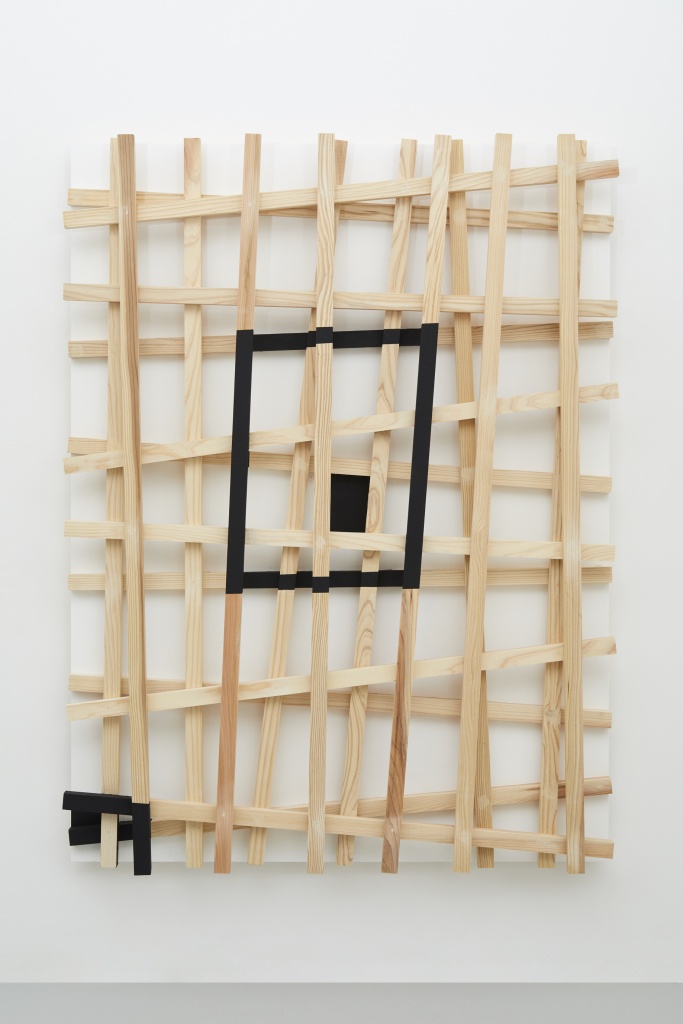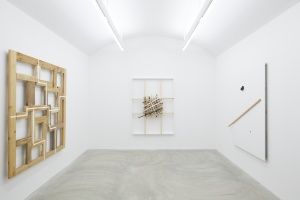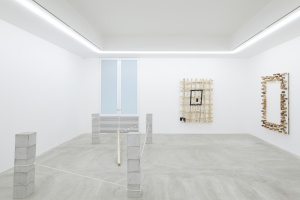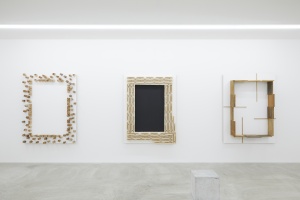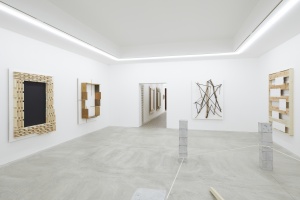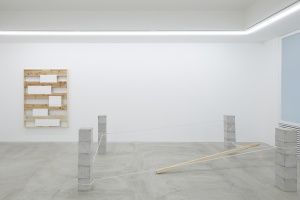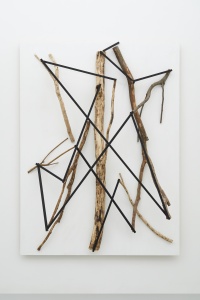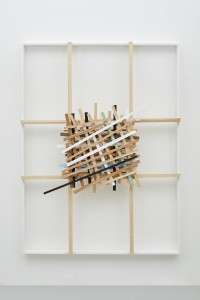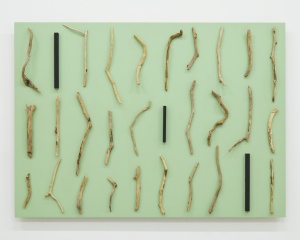Tomio Koyama Gallery is pleased to present “Measured Divisional Entities,” a solo exhibition with Kishio Suga. The exhibition serves as a valuable opportunity to view some of the latest works by Suga, who in recent years has received remarkable acclaim within the international art scene.
【About Kishio Suga】
Kishio Suga was born in Morioka city, Iwate Prefecture in 1944. In 1968 he graduated from the Department of Painting at Tama Art University, and served as a central member of the art movement Mono-ha that took place from the late 1960s to the 1970s. For over 50 years since, Suga has continued to pursue a consistent philosophy and actively develop his artistic practice, paving his own unique path as one of the leading figures of Postwar Japanese art in our times. Even in recent years when the reevaluation of Mono-ha has been gaining much international recognition, he persists in further deepening his contemplation, with his unfaltering passion and enthusiasm for his practice serving to define the presentness of his work.
Since his first solo exhibition in 1968, Suga has presented work on over 400 occasions in numerous exhibitions both within Japan and abroad. Recent years in particular have seen remarkable developments and achievements in his career. He was selected for the 57th Venice Biennale, “VIVA ARTE VIVA” I 2017, receiving high acclaim for Law of Situation in which he recreated of one of his early representative works in the form of an installation floating on water. In that same year Suga participated in the group exhibition “Japanorama: New Vision of JAPAN from 1970,”curated by Yuko Hasegawa that was held at the Centre Pompidou-Metz in France. In 2018, solo exhibitions of his works were held concurrently across three venues in Tokyo at THE CLUB (Ginza), Tomio Koyama Gallery (Roppongi), and 8/ ART GALLERY/ Tomio Koyama Gallery (Shibuya). This year, Suga was invited to serve as a guest artist for “30th Anniversary of the Yokohama Museum of Art: Meet the Collection” (~until June 23, 2019) to create unique encounters between his own works and those he selected from the museum collection.
Suga’s works were added to the collections of the Centre Pompidou and Dia Art Foundation in 2018, and are also housed in numerous prominent museums throughout the world including the Tate Modern, Dallas Museum of Art, M+, Guggenheim Abu Dhabi, The Scottish National Gallery of Modern Art, and the Museum of Contemporary Art, Tokyo.
【The Essence and Existence (Reality) of “Things” in Suga’s Work】
In his response to “things” such as stones, wood, and metal, Suga has stated “I even come to the extent of thinking that perhaps this stone is not in fact a stone” (“On the Formation of Mono-ha” Talk by Kishio Suga, Symposium [Mono-ha and Archives], Tama Art University, 2016). As can be understood from this comment, Suga engages in thoroughly questioning existing concepts regarding “things” in an endeavor to re-recognize their essence and existence (reality).
“Things,” as Suga himself perceives, not only refers to physical materials such as wood, stone, metal, and glass, but also includes abstract elements that are not visible to the eye like space, human thought, awareness, and concepts. Furthermore, he does not regard “things” as mere “solid matter” or “object” that is instilled with meaning through human subjectivity, but rather as existences that harbor a more profound and in-depth ‘presentness’ which incorporates a unique sense of logic and directionality, and even people’s responses. In this respect, Suga considers the artist’s role as capturing these aspects, and visualizing them through minimal means of intervention or manipulation.
Suga states as follows in an interview featured in April 2019 in the Kanagawa Shimbun:
“I would think ‘this is wood, and this is stone’ for example, because it’s linked to the symbolic associations inherent in my mind. I see nothing wrong in freeing oneself from these associations, and to look at a piece of wood while questioning whether it is indeed a piece of wood. In doing so, there is nothing else other than what each person feels and perceives. I attempt to create such opportunities through my work.”
Suga enables “things” and “things,” “things” and “space,” and “things” and “people” to connect, enclose and be interdependent on each other in different ways from how we usually perceive things to be in existence, thereby giving the impression of things as presenting new forms and even situations. Through such means, he instills viewers with a new sense of awareness towards things. In the 1970s in the United States and Europe when the dualistic principles of subjective and objective were the mainstream, Suga’s works had been criticized, rendered “not considerable as art.” In recent years however, the considerations and ideas in his practice have come to be truly understood internationally, thus resulting in numerous spheres of influence.
【The Energy and Fluidity of Thoughts Pertaining to Things and People –About the Exhibition and Works Presented】
Suga states as follows regarding this exhibition:
“When people physically engage with things, the affirmed existence of the objects seemingly comes to surface, even if there is no special purpose or intention there. In a sense, people expand their thoughts and ideas into the space on site through measuring the direction and movement of the energy that is emitted from things. It is almost like developing a certain logic that serves to support a situation that sufficiently responds to the condition and tendency of things (a logic that further affirms the substantiality of things). People’s thoughts and awareness is not something that is continuous or unchanging. It is therefore important to instead select and modify as necessary.” –Kishio Suga, April 2019
In addition to various relationships between respective things, space, people, and other things in the world, Suga has further suggested through his work the “continuity,” “fluidity,” and “intention” of things. He considers things as not being fixed, but instead being uncertain –moving and changing with the passage of time. Such can also be said for human thought, which he regards as a fundamental essence of reality.
Suga’s works serve as places where the forces of things, people, and space influence one another. Pieces of wood and stone are cut, bent, folded, laid out, overlap, and connect. Despite these subtle acts, his works seemingly communicate to viewers the relationship between themselves and their surrounding atmosphere and environment, and even a sense of energy such as the flow of air and temperature. Through relationships and connections between “things” and “things,” “things” and “human spirit” that are interdependent and mutually supportive rather than confrontational, we come to observe an outlook on the world that we had never perceived before.
In recent years Suga has appropriated wooden frames reminiscent of canvases that are installed on the wall like paintings and within which holes or grid-like frameworks are made –further exploring new visual effects through protrusions and depressions that extend beyond the frames, the combination of different materials such as stone, wood, and metal, and the application of paint. By means of this approach, the works that at first glance appear flat come to incorporate space within them due to their three-dimensional nature, seemingly creating a new structure for the autonomy of the picture plane through the three-dimensionality of sculpture and its relationship with the surrounding space. Furthermore, by employing “raw” materials like iron, wood, and stone in their natural form, Suga attempts to clearly convey the conditions of a world that while connected to things in reality, are never to coalesce.
“It doesn’t mean that anything can be art. The one point that makes something a work of art is that it only comes to manifest as so once we change the way we perceive reality.”
(“On the Formation of Mono-ha” Talk by Kishio Suga, Symposium [Mono-ha and Archives], Tama Art University, 2016)
Suga’s works liberate us from our usual awareness, and serve as an opportunity to acquire a new perspective on things and an activated spirit. Viewers are invited to encounter the latest works of an artist of our contemporary times that permeates with an intense sense of energy and air of sophistication.
—————————————————————————————–
For press inquiries, please contact:
press@tomiokoyamagallery.com (Makiko Okado)
—————————————————————————————–

